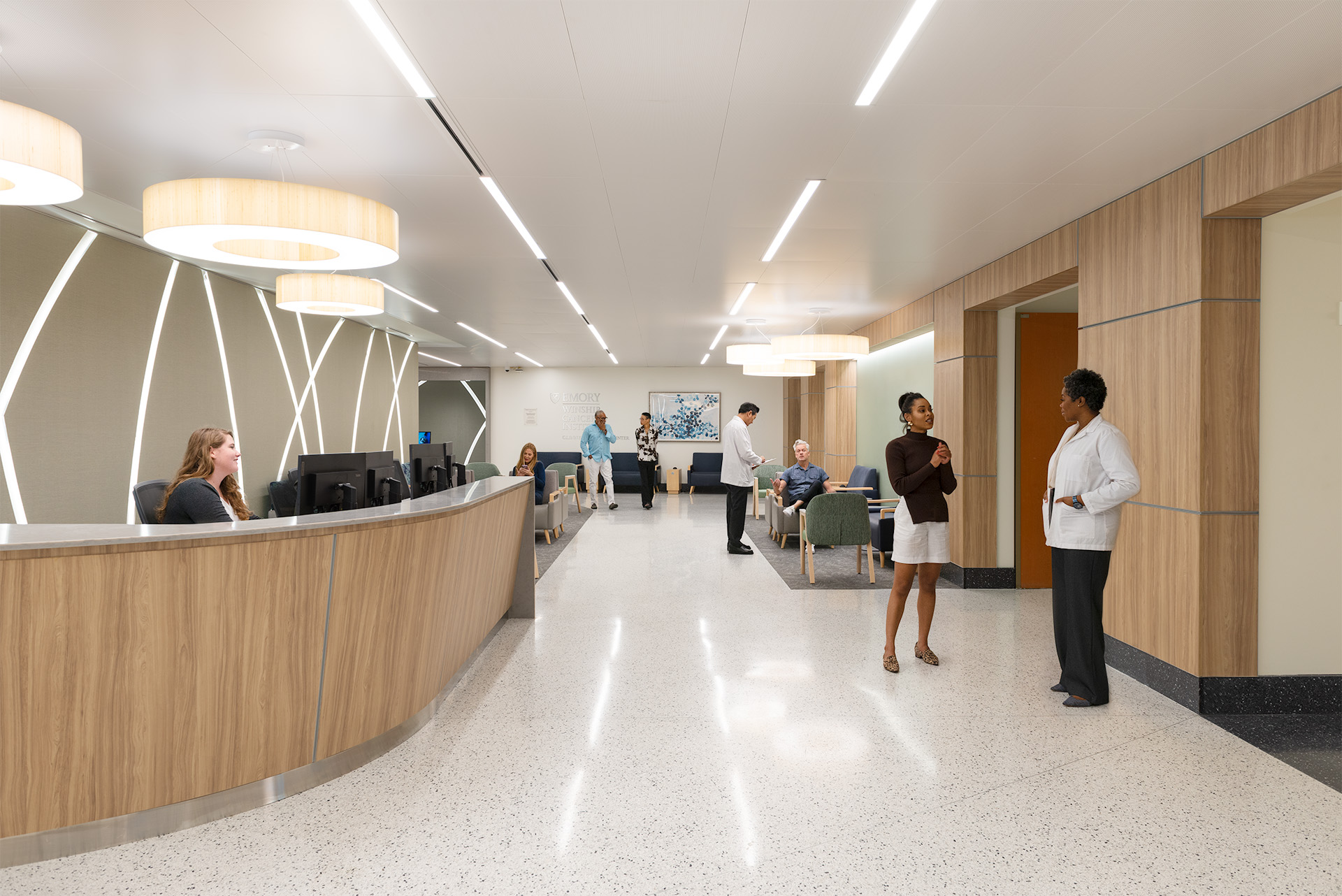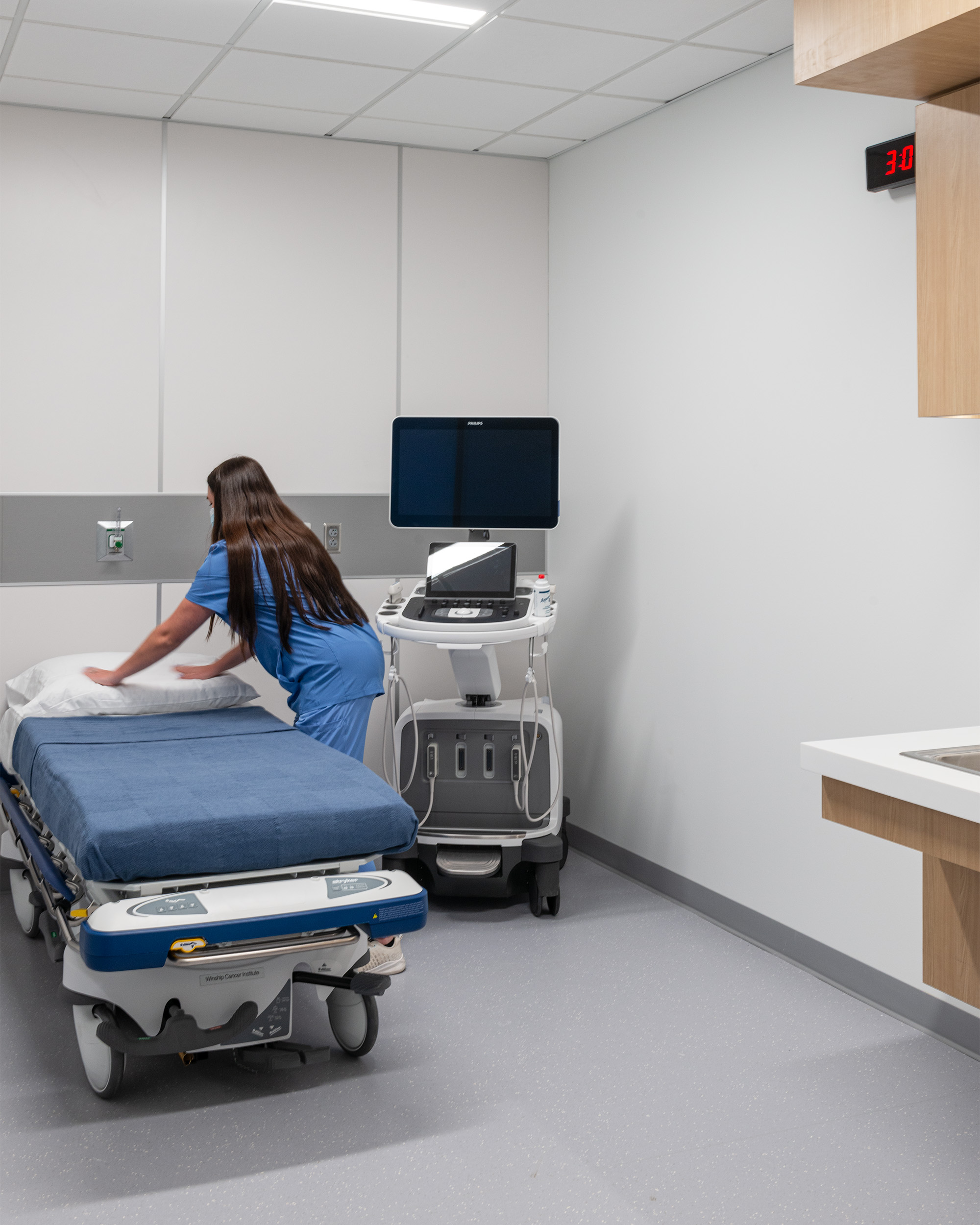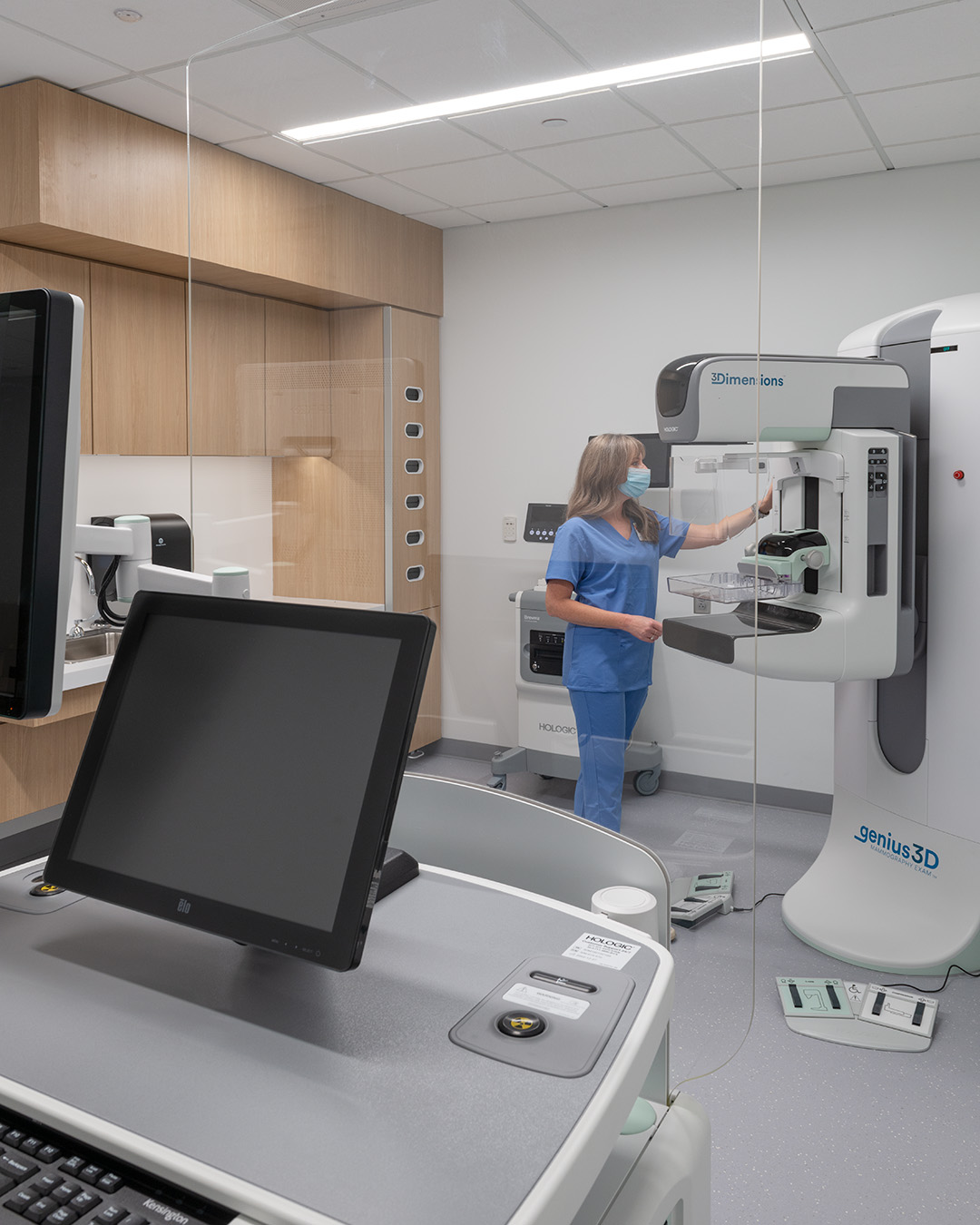
Providing Advanced Care While Maximizing Comfort
Breast imaging centers are vital components of the breast cancer care continuum, providing diagnostic and screening services for a range of breast-related conditions. These services require advanced technology and equipment, as well as high standards of quality and safety. However, they also entail significant emotional and physical challenges for patients, who may face anxiety, stress, or pain during their procedures. Taking a holistic approach to creating spaces addresses both the clinical and human aspects of breast imaging. Here, we will explore key design principles and strategies that should be employed to create breast imaging centers that are not only functional and efficient, but also patient-centered and supportive.
Whether a patient is visiting a breast imaging center for a yearly screening or for a worrisome follow-up appointment, the goal should be to help create a patient experience that is as calm and tranquil as possible.

Integration with Nature
Results of evidence-based studies have concluded that healthcare spaces with views to nature and daylight reduce stress in patients, waiting spaces should take advantage of exterior vistas, like the large floor to ceiling windows at the Breast Center at the Emory Winship Cancer Institute on the Clifton campus. Where views to the outside are not immediate, an alternative is for the finish palette to reflect nature as much as possible. For example, at the Emory Winship Breast Clinic, the design of the interior lobby mimics blues and greens found in nature, and the backlit feature walls replicate the energy and movement of a grassy meadow.
Discreet Dressing Rooms
Design trends in breast imaging centers often include discreet, gowned waiting areas with private dressing rooms near the imaging rooms to maximize the efficiency of the modality rooms while also providing a quiet respite for the patient before and after the imaging procedure. However, if patient thru-put is not a priority, undressing and dressing could occur inside the imaging room. Sometimes dressing rooms can be located adjacent to the mammography room, where the patient enters the dressing room from the corridor and exits the dressing room directly into the mammography room. However, the direct-entry dressing room model requires additional radiation safety and privacy controls to make it feasible. Additionally, patient lockers should be provided so that the patient is reassured knowing that their belongings are secure during their procedure.
Advanced Technology and Equipment
Designing a breast imaging center requires unique planning for diagnostic modalities that might include mammography, stereotactic mammography, and ultrasound. With newer mammography radiography equipment, the walls may or may not need to be lead-lined, depending on the review by a licensed radiation shielding physicist. The mammography room should include deep cabinets with plenty of storage for the myriad of x-ray accessories that allow the technician to provide a variety of images of the breast. The stereotactic mammography room is where breast biopsies occur, so the stereotactic room requires more floor space, as well as more countertop space and clean supply storage.
The ultrasound room does not require any shielding for the walls, but the room does require additional floor space for a stretcher with enough clearance on either side so that the ultrasound technician can work from either side of the patient. The ultrasound room can be used for diagnostic purposes or for biopsies, so like the stereotactic room, the ultrasound requires more countertop space and clean supply storage. Additionally, the ultrasound room sometimes includes cleaning and disinfection of the equipment in the room and will require extra countertop or wall space.


In closing, breast imaging centers are more than just spaces for providing diagnostic and screening services. They are also spaces where patients experience a range of emotions, from fear and anxiety to hope and relief. Architects have the responsibility and the opportunity to create spaces that support patients throughout their breast imaging journey. By applying a holistic approach that considers both the clinical and human aspects of breast imaging, architects can design spaces that are not only functional and efficient, but also patient-centered and supportive. This approach leads to improved outcomes and experiences for both patients and staff in breast imaging centers.
